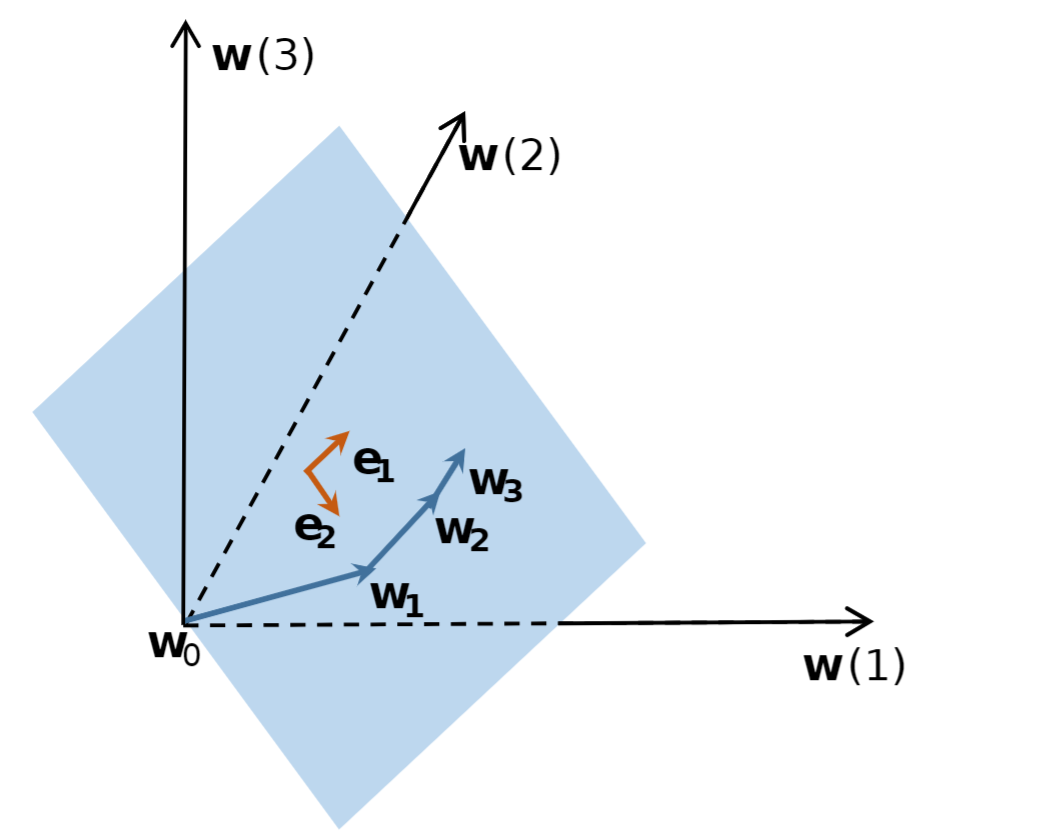This repository is the official implementation of Low Dimensional Trajectory Hypothesis is True: DNNs can be Trained in Tiny Subspaces (TPAMI 2022).
Deep neural networks (DNNs) usually contain massive parameters, but there is redundancy such that it is guessed that they could be trained in low-dimensional subspaces. In this paper, we propose a Dynamic Linear Dimensionality Reduction (DLDR) based on the low-dimensional properties of the training trajectory. The reduction method is efficient, supported by comprehensive experiments: optimizing DNNs in 40-dimensional spaces can achieve comparable performance as regular training over thousands or even millions of parameters. Since there are only a few variables to optimize, we develop an efficient quasi-Newton-based algorithm, obtain robustness to label noise, and improve the performance of well-trained models, which are \changedtext{three} follow-up experiments that can show the advantages of finding such low-dimensional subspaces.
The environment requires:
- python 3.6
- pytorch 1.4.0
- CUDA Version 10.0.130
We provide training examples in run.sh (take CIFAR experiments for example):
# CIFAR experiments
# Label noise levels
c=0.2
datasets=CIFAR10
for model in resnet20
do
CUDA_VISIBLE_DEVICES=0 python -u train_sgd.py --datasets $datasets --lr 0.1 --corrupt $c --arch=$model --epochs=150 --save-dir=save_labelnoise$c\_$model |& tee -a log_$model
CUDA_VISIBLE_DEVICES=0 python -u train_pbfgs.py --epochs 20 --datasets $datasets --corrupt $c --params_start 0 --params_end 81 --batch-size 1024 --n_components 40 --arch=$model --save-dir=save_labelnoise$c\_$model |& tee -a log_$model
CUDA_VISIBLE_DEVICES=0 python -u train_psgd.py --epochs 40 --datasets $datasets --lr 1 --corrupt $c --params_start 0 --params_end 81 --batch-size 128 --n_components 40 --arch=$model --save-dir=save_labelnoise$c\_$model |& tee -a log_$model
done-
enter directory
$ cd DLDR -
run the demo
$ ./run.sh
Specifically, the demo consists of two steps:
The first step is to perform DLDR sampling with regular training (e.g. SGD):
$ CUDA_VISIBLE_DEVICES=0 python -u train_sgd.py --datasets $datasets --lr 0.1 --corrupt $c --arch=$model --epochs=200 --save-dir=save_labelnoise$c\_$model |& tee -a log_$modelWe can set randomseed and total training epochs epochs . By default, we sample the model parameters after each epoch training.
The second step is to conduct training in the subspaces extracted by DLDR (from the same initalization):
$ CUDA_VISIBLE_DEVICES=0 python -u train_pbfgs.py --epochs 20 --datasets $datasets --corrupt $c --params_start 0 --params_end 81 --batch-size 1024 --n_components 40 --arch=$model --save-dir=save_labelnoise$c\_$model |& tee -a log_$model where epochs is the total number of training epochs for the P-BFGS algorithm, params_start is the index where DLDR sampling begins and params_end is where DLDR sampling stops. n_components is the number of variables we extract.
The datasets can be chosen from CIFAR10/CIFAR100/ImageNet. The percentage of corrupted data c is a real number in the range [0, 1].
@article{li2022low, \
title={Low Dimensional Trajectory Hypothesis is True: DNNs can be Trained in Tiny Subspaces}, \
author={Li, Tao and Tan, Lei and Huang, Zhehao and Tao, Qinghua and Liu, Yipeng and Huang, Xiaolin}, \
journal={IEEE Transactions on Pattern Analysis and Machine Intelligence}, \
year={2022}, \
publisher={IEEE} \
}